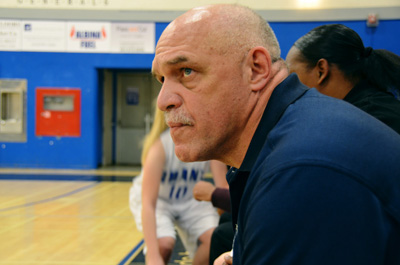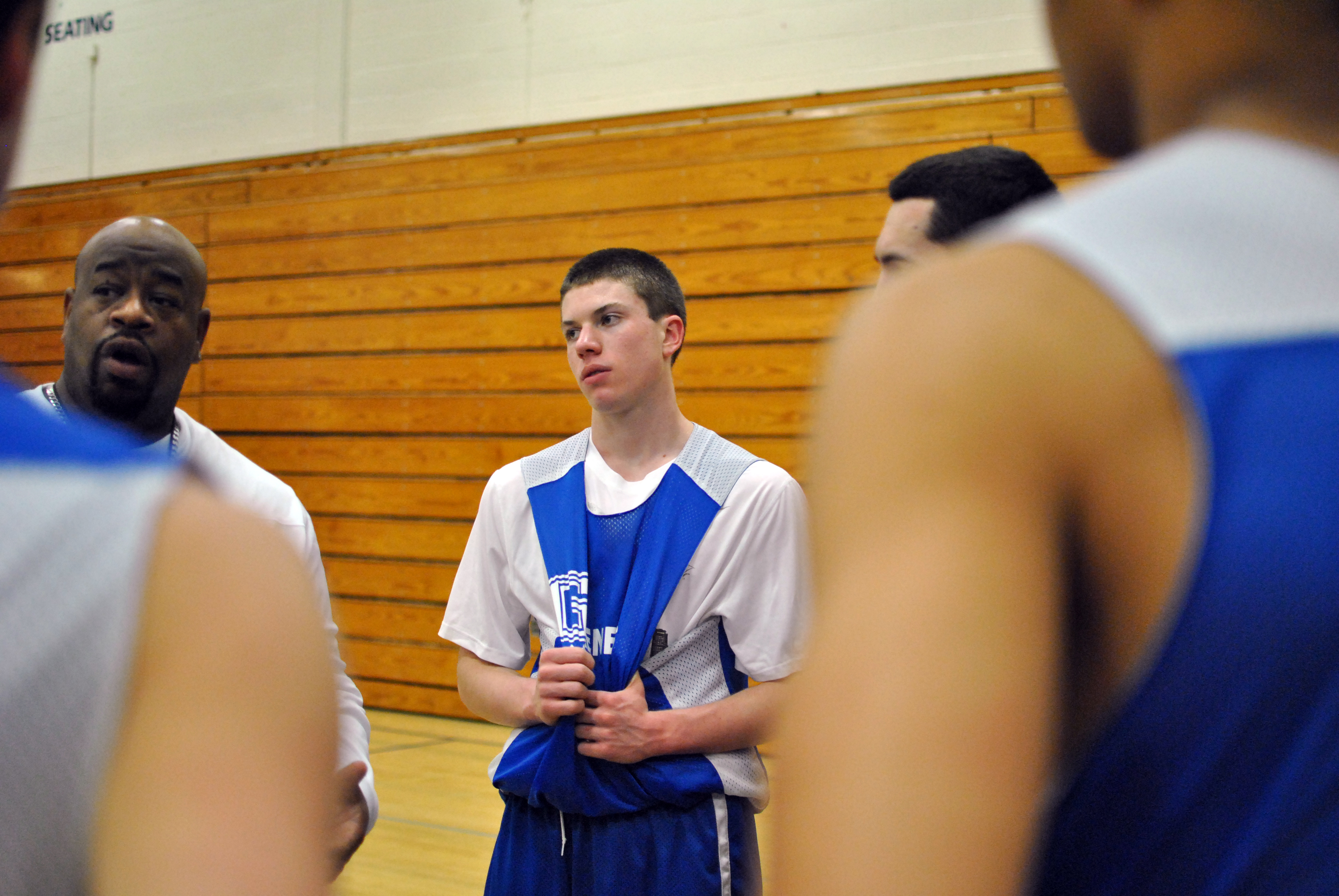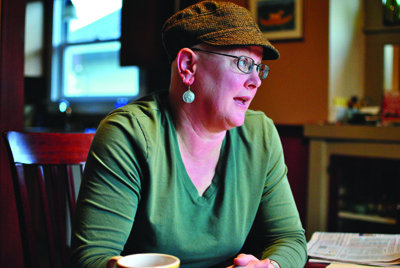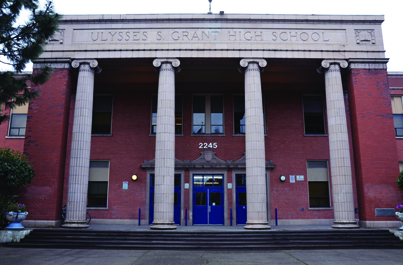
Charlotte Klein will only spend three years at Grant High School. She’s a seventh grader at the Fernwood campus of the Beverly Cleary School and will be a member of Grant’s Class of 2018.
But her senior year could be spent in classrooms as far away as the shuttered Marshall High School because of a Portland Public Schools bond that passed last November. Grant will be closed while its buildings are reconstructed and renovated. All students and staff will be relocated to a temporary building for two years – from 2017-19.
“It doesn’t sound like that will be much fun (for students) to have to move schools during their senior years,” Klein says. “You’d have to get used to a new place.”
School officials say the top possibility is Marshall’s campus, which the district closed two years ago.
“For now, the Marshall site is the site that’s been identified for – we’re calling it the ‘swing space’ for Grant – so Grant students and staff would move over there,” says school district spokesman Matt Shelby.
The Marshall campus is located just off Southeast 92nd Avenue between Powell and Holgate boulevards, about a 15-minute drive from Grant in low traffic or a 30-60 minute public transit ride. Though it used to hold three schools, the Marshall campus closed after the 2010-11 school year through a PPS plan to reduce district spending by consolidating schools.
The logistics of getting Grant students out to Marshall in time for class are currently unclear. According to Shelby, there is money in the district’s budget for Grant set aside for the transportation of students. One possibility is carting students from the Grant campus to the Marshall campus in traditional yellow school buses.
However, plans aren’t solidified just yet. Because reconstruction at Grant is still years away, PPS is focusing on upcoming projects, such as the modernization of Roosevelt and Franklin. “As we get closer to the construction date, the implementation plan will become much more clear,” Shelby explains.
Charlotte Klein is one of many students who will be relocated in the midst of their high school careers. Current seventh graders aimed for Grant will spend their senior year at Marshall, while current sixth graders will spend their junior and senior years away from Grant. Today’s fifth graders will return to a new Grant building for their senior year.
Klein’s older sister, Helena, currently a Grant junior, believes it isn’t that big a deal for students to move. “It’s just a school. All your friends will still be there,” she says.
Grant, built in 1923, is one of the centerpieces of a record-breaking $482 million bond measure passed by voters with a promise to rebuild and renovate schools in the Portland Public Schools district. The district’s 78 schools are on average 65 years old.
The bond reconstruction plans focus on three high schools: Roosevelt, Franklin and Grant. The district will spend an estimated $95 million to give Grant “full modernization.” Many other schools in the district will only get partially updated.
The modernization is “basically going to knock down this building,” says Principal Vivian Orlen. Beyond the reach of simple repairs, some parts of Grant will be demolished. The main building will retain the “historic external character of the school,” while the insides will be completely redone, according to Cameron Vaughan-Tyler, the district’s Partnership Development Manager in the PPS Office of School Modernization.
Structures considered architecturally historical will be saved, including the main entrance column façade. Orlen says there will be a new auditorium, a new library – new everything.
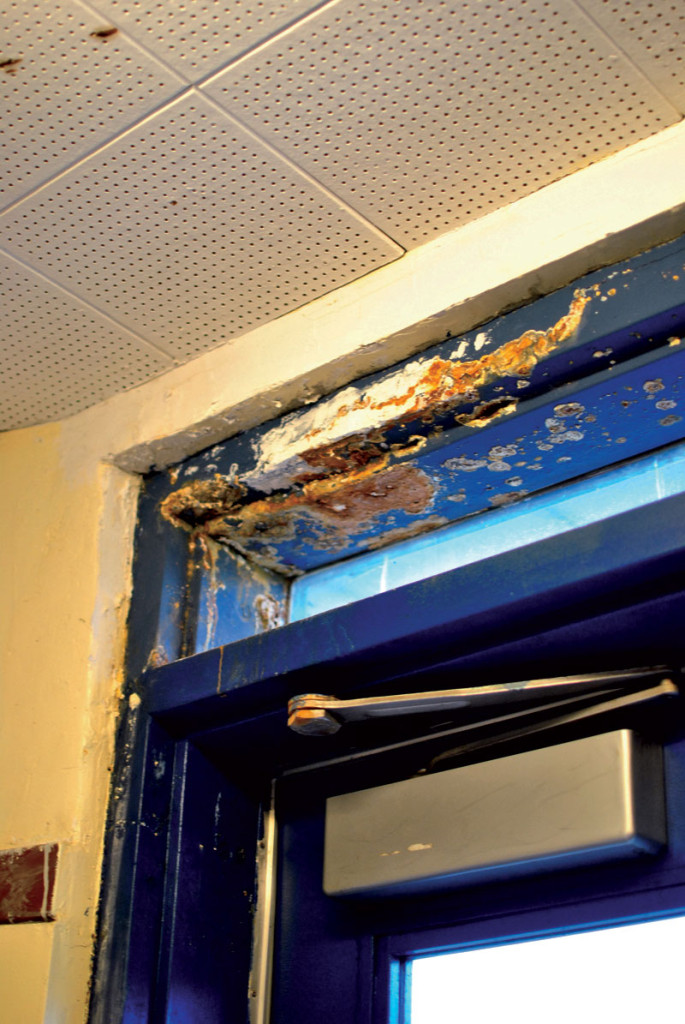 But the major high school renovations are going to occur one at a time, and Grant is third in line. According to a PPS timeline, construction at Grant won’t begin until 2017. Can it wait that long?
But the major high school renovations are going to occur one at a time, and Grant is third in line. According to a PPS timeline, construction at Grant won’t begin until 2017. Can it wait that long?
“I’m not sure the school will last,” says Grant sophomore Cory Koehler. She’s noticed the school building showing signs of its age, mentioning falling ceiling tiles and the second-floor track in the old gym that she feels is precarious. The chipping floor tiles in center hall that she’s seen have been taped over. The Grant building “can function but it’s on its last legs,” Koehler says.
Grant is categorized as a URM, which stands for an “unreinforced masonry” building – an outdated construction style that is historically unsafe in earthquakes. According to a 2006 seismic rating from the Oregon Department of Geology and Mineral Industries, Grant has a “Very High” potential risk of collapsing in an earthquake.
A ten-year PPS bond that passed in 1995 gave Grant minimal seismic strengthening upgrades on its structural systems, which includes columns, walls and roofs. But the 2012 bond plans to renovate much more completely.
“You have to go in and basically put in a new structure that can resist the ground movements,” says Andre Barbosa, an assistant professor at Oregon State University’s School of Civil and Construction Engineering.
Seismic retrofits seen today are meant to help the main parts of the building withstand an earthquake while occupants evacuate, Barbosa says. The new structure, commonly made with steel, has to be tied to the external walls to successfully support the building.
Grant English teacher Russell Peterson thinks the current Grant buildings would be unsafe in an earthquake, a sentiment he shares with his students during earthquake drills. If a high-magnitude earthquake hit Portland, “we’d all die,” he says bluntly. Peterson believes the building would essentially collapse in on itself; the second floor would fall onto the first floor, and everything would end up in the basement.
According to Barbosa, this may not be very far from the truth. “Depending on the structure, you may have walls collapsing outward, and then the floors fall down,” he says, adding that brick buildings as old as Grant are not at all earthquake safe.
Masonry wall buildings like Grant were built before anyone was really aware of the need for seismic safety.
“If there was an earthquake, I would hope that no one was in the school,” Koehler says.
The bond promises to strengthen PPS schools and better prepare them for an earthquake, but Grant won’t see progress for years.
Today, Grant does receive minor repairs when necessary, according to assistant head custodian Tim Carman. Problems like electrical outlets that aren’t working or broken glass are dealt with. Recently, there was some brick threatening to fall off the building near the gyms, and that was fixed over winter break, says Carman.
However, repairs focusing more on aesthetics – like a new coat of paint or replacing aging chipped bricks – don’t happen because they aren’t considered necessary. With a tight budget, the school’s appearance isn’t a top priority.
Even repairs that are more practical are sometimes skipped over. “There are a lot of things that still sort of work, so they don’t get fixed,” says Carman.
According to Carman, the rattling and clanking noises students sometimes hear emitting from the classroom heaters are due to repairs made with cheap parts. Some faucets in the bathroom spray water at violently high pressure while others refuse to relinquish a single drop. Floors are cracking and many classroom wall clocks are frozen forever at one time. “I’ve seen ceiling tiles fall before,” says senior Harley Nerheim-Chereck.
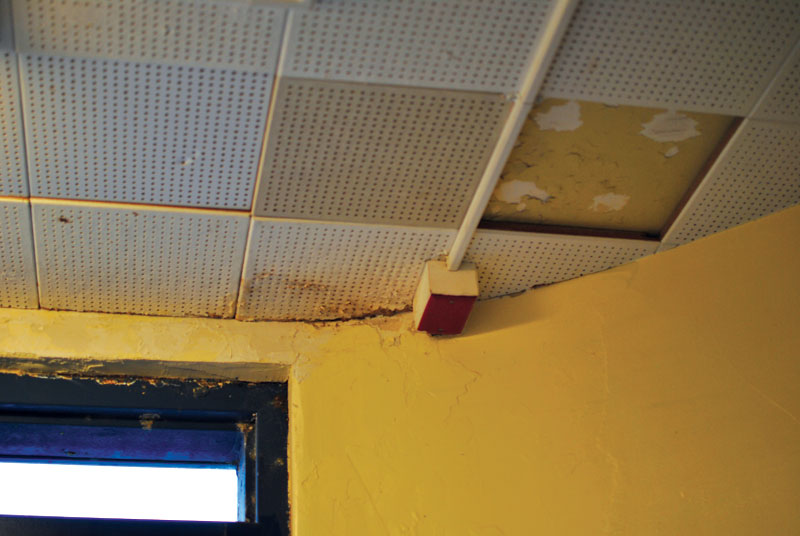 Junior Eliese Dorsay adds: “I always wonder if the next (ceiling tile to fall) will be right above my head.”
Junior Eliese Dorsay adds: “I always wonder if the next (ceiling tile to fall) will be right above my head.”
When repairs are actually made, it tends to take a while because district and school money is being spent on other priorities. “Repairs here are few and far between,” agrees Orlen.
Many improvements in the school only happen through the efforts of parents who volunteer their time to work with district supplies. “The age of the building doesn’t allow for some things,” Orlen says, explaining the challenges of upgrading Grant.
She noticed in March 2012 the need for another computer lab and she found money in the school’s budget to buy 35 desktop computers. These computers went unused for months once it
became evident that Grant lacked enough power to support a computer lab in the available room. The district had to intervene and electricians were employed before finally – during the 2012-13 winter break – the new computer lab was finished.
Orlen includes heating problems and water leakage on her list of repairs Grant needs but isn’t getting. “You just have to live with it here,” she says.
She points out Grant’s inaccessibility for disabled citizens. With only one elevator that moves from the first floor to the second, some disabled students aren’t able to access parts of the building. In the past, Grant administrators have moved classrooms so students could attend a class originally held in the basement. But the art studios can’t be moved and the cafeteria and band room are simply out of reach to anyone in a wheelchair.
Cynthia Zrinyi, a Grant special education teacher, adds that her students are also unable to access the choir room because of a safety regulation requiring each student to be accompanied by two staff members if he or she goes upstairs. This is because in the case of an emergency, it would take two staff members to evacuate one student down the stairs. “We can’t bring students to the choir room to listen to music unless I can spare at least two staff from my room…which I can’t, because of the number of students I have,” Zrinyi says.
Zrinyi also explains that Grant only has two wheelchair-accessible exits, which means in an emergency the staff members might be forced to evacuate students down sets of stairs, an action potentially dangerous for more medically fragile students.
Vaughan-Tyler says improving the building will help student achievement, as well as make things safer. The goal is to design schools with more flexible space in order to create different learning opportunities.
Nerheim-Chereck believes that as long as vital repairs are completed on buildings considered unsafe, “money should go to paying teachers more, putting money into better programs and new technology.” He thinks this kind of priority spending could be more beneficial to students.
Dorsay feels differently, saying, “It might be more beneficial but at the same time you don’t want to be in a building that’s unsafe.”
Apparently, the public agrees. According to the final official results on the Multnomah County Elections Division website, the bond passed with 66 percent of voters supporting it.
According to the timeline submitted by PPS staff, official planning for Grant’s restoration won’t begin until the summer of 2015. Construction will begin in February 2017, but major renovations will wait until June that year, allowing Grant students to finish their school year in the building.
The Grant building as we know it today will be closed, gutted and rebuilt on the inside for a period of two years. If everything goes according to plan, the new, improved Grant will be finished just in time for the 2019-20 school year.
Though she recognizes the downside as well, Charlotte Klein thinks the reconstruction is important. “I think a lot of people will be upset, but if Grant is not in the most modern shape… then I think it would be better for (future students) to have something newer.”
Other students have different perspectives on Grant’s upcoming move to a temporary building. “If I were a senior, that would be disappointing,” says senior Ken Fukumoto.
“I wouldn’t go there – I would transfer to a different school,” says junior Isabel Anderson, adding that she believes most students would transfer if faced with the decision. Having to move to a temporary building for school is “inconvenient,” she explains, as opposed to switching to a permanent school.
Senior George Quinn thinks the Grant building is a big aspect of school pride. “There’s a lot of history,” he says. Quinn also believes that the building is a part of the neighborhood. “It’s unfortunate that people will have to leave to (go to) another school.”
Speaking for the district, Shelby says PPS recognizes that the reconstruction and relocation causes challenges for the students, parents and staff, but it believes the two-year inconvenience will be more than balanced by the result: a new, safe, modern school that will benefit the community for years to come. “It’s absolutely worth the trade-off,” says Shelby.
Orlen explains that public planning will begin this fall, which will accept design ideas from school staff, students and the community. Excited for the new building, Orlen says, “There will be a totally brand-new, state-of-the-art, 21st century high school here.” The new school will include elevators and ramps for accessibility, and won’t have classrooms or a cafeteria in the basement. “I would imagine that this new school will have a lot of ‘green’ aspects to it,” Orlen adds, speculating about sustainable, environmentally friendly materials.
Zrinyi has hopes for the new Grant building as well. Her first priority is a wheelchair ramp exit closer to the special education classroom, but she would also like to have curriculum accessibility. “I would love it if choir, band, art and ceramics were all on the main floor so that my students could access these classrooms,” Zrinyi says.
Orlen has dreams for public gathering areas the community can access and enjoy. “I have this whole idea of building something that everyone can benefit from,” Orlen says.
The years of planning and construction will pay off, the reward being brand-new, earthquake safe Grant buildings. Students agree it’s about time for some changes around the school.
But for now, Grant is going to have to manage as it is.

